Exploring the Rocket Wakesurf Board: A Complete Guide
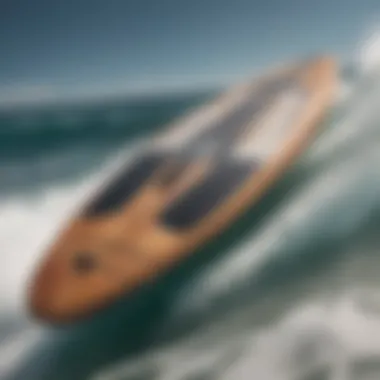
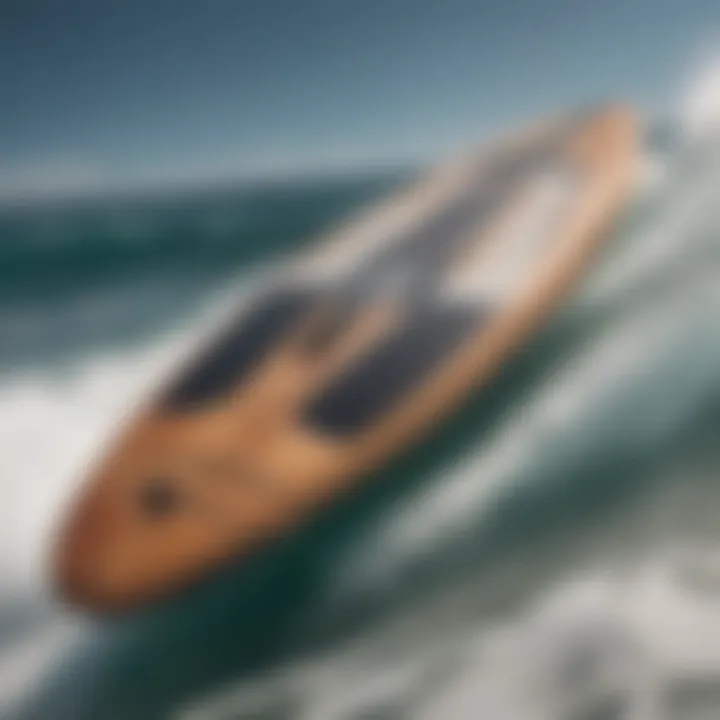
Intro
When it comes to wakesurfing, the right equipment can make all the difference. Among the myriad options available to riders, the Rocket wakesurf board stands out as a compelling choice for enthusiasts of all levels. This guide aims to unravel the design intricacies, performance traits, and practical applications of the Rocket board. Whether you're a novice just dipping your toes in the waves or a seasoned surfer honing your skills, this information will illuminate the path to better riding.
Surfboard Reviews
Understanding the types and features of the Rocket wakesurf board is essential. The diverse range of models caters effectively to different preferences and skills. Notably, these boards emphasize buoyancy and responsiveness, providing a great balance that enhances the riding experience.
Types of Surfboards: An Overview
In exploring surfboards, one might come across various categories. But when it comes specifically to wakesurfing, the Rocket series showcases a few standout types:
- Skim Boards: These are lighter and provide a faster ride, perfect for tricks and sharp turns.
- Surf Style Boards: Heavier and wider, these boards offer more stability and are suitable for a leisurely cruise on the water.
- Hybrid Boards: A perfect blend of the previous two, hybrid boards allow for a versatile surfing experience across different styles.
Each type has distinct characteristics which can enhance your performance based on your skill level or surfing style. It's crucial to identify which version best aligns with your riding goals.
Best Surfboards for Beginners and Pros
Finding the right board means understanding what both beginners and pros seek:
- For Beginners: A board like the Rocket Drone provides ample volume and surface area. This stability is crucial when mastering basic techniques and gaining confidence on the water.
- For Advanced Riders: The Rocket Response is designed for agility and maneuverability, giving pros the edge they need for advanced tricks and tighter turns.
Like a fish in water, finding the right fit elevates the wakesurfing experience significantly. Comparing and contrasting these offerings brings clarity to the decision process.
"Riding a wakesurf board is more than just gliding; it’s about connection with the water. Finding the right board makes all the difference."
Surfing Techniques
Before you even step foot on your Rocket board, familiarizing yourself with essential techniques will pave the way for success on the water. From the initial ride to advanced maneuvers, the skills you develop will determine your enjoyment and proficiency.
Essential Techniques for Beginners
- Stance and Balance: Proper stance feet width and weight distribution are key. Beginners often find a shoulder-width stance works best.
- Starting Procedures: Learning to start from the boat is critical. Ensure you're relaxed, and grip the rope firmly as the boat accelerates.
- Weight Shifting: Moving your weight back when necessary helps in cutting through waves efficiently.
Committing these basic techniques to heart means translating confidence in your rides.
Advanced Maneuvers for Experienced Surfers
Once those beginners establish a foothold, it's time for more experienced surfers to challenge themselves with:
- 360 Turns: A classic trick that combines speed and control. It revolves around using momentum and proper weight distribution.
- Ollies and Shuvits: These aerial tricks add flair, but they require solid fundamentals. Repeated practice sharpens skills and enhances freedom in movement.
- Carving and Slashing: Working these actions into your riding will affect how you interact with the wake, allowing for style as well as skill.
Honing these advanced techniques enables experienced surfers to leave their mark on the water and impress their peers.
Navigating the wakesurfing world might seem like a steep climb initially. However, understanding the Rocket wakesurf boards' craftsmanship coupled with practical surfing techniques provides a solid foundation for any rider. Each ride presents a new opportunity for growth and enjoyment.
Intro to Wakesurfing
Wakesurfing has caught the imagination of water sports enthusiasts in recent years, becoming a significant trend on lakes and oceans alike. The sport marries elements of surfing with the thrill of riding behind a boat, allowing surfers to enjoy the wave formed by the vessel without being tethered to it. This freedom is a primary appeal, offering a unique blend of skill, balance, and enjoyment. It stands out for not just being a sport, but a recreational lifestyle that embraces the spirit of both adventure and community.
One key aspect to understand when diving into wakesurfing is its accessibility. While traditional surfing usually requires ocean waves, wakesurfing allows individuals to ride the water on various bodies, making it approachable for beginners. From young kids to the seasoned adults, wakesurfing fosters an inclusive environment where progress is visible and rewarding.
Definition and Overview
At its core, wakesurfing involves riding a shortboard on the wake created by a boat. Unlike conventional wakeboarding, where riders are pulled continuously, wakesurfers aim to find their balance on the wake itself, allowing them to surf freely. The board is specifically designed for this purpose, generally shorter and wider than a typical surfboard. This gives wakesurfers an edge in stability and maneuverability.
Surfers often use specialized boats that produce optimal wakes, designed with ballast systems to enhance water displacement. Regardless of the boat, the key is crafting a wave that can be ridden without any hooks or tethers, mimicking that pure surfing experience.
The Rise of Wakesurfing Popularity
The surge in wakesurfing's popularity can be attributed to various factors, both social and technological.
- Accessible Equipment: Advances in board and boat technology have made wakesurfing more accessible. Brands have optimized board designs, resulting in easier starts and improved performance on the water.
- A Community Spirit: Social media platforms such as Facebook and Reddit have played a pivotal role in forming a thriving community. Surfers share tips, tricks, and experiences, nurturing a culture of camaraderie.
- Lifestyle Appeal: The balance of excitement and downtime is appealing. Wakesurfing isn’t just about catching waves; it’s about enjoying a day on the water, soaking up the sun with friends and family.
Ultimately, wakesurfing has emerged from the fringes into mainstream culture, captivating people with its unique blend of thrill and leisure. This sport isn’t merely an exhilarating pastime; it's an invitation to connect with nature, friends, and the thriving wakesurf community.
Design and Features of the Rocket Wakesurf Board
When it comes to wakesurfing, the design and features of the board play a pivotal role in the riding experience. The Rocket Wakesurf Board stands out due to its innovative design, which caters to various skill levels and preferences. With a thoughtful consideration of construction materials, dimensions, weight, and fin configurations, the Rocket delivers both performance and stability. Let's dive into the specifics.
Construction Materials
The choice of construction materials significantly affects a wakesurf board's performance. The Rocket Wakesurf Board employs three main types of materials: Polyester, Epoxy, and Foam core. Each has its unique features that cater to specific rider needs.
Polyester
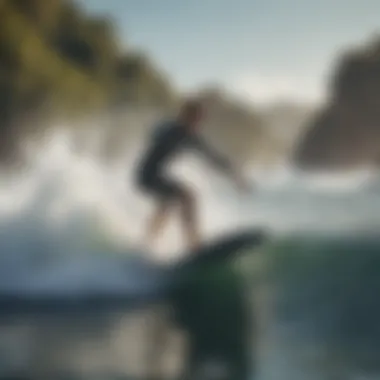

Polyester resin is a booming choice for many in the wakesurfing community. It's known for being lighter and generally more affordable than other materials, making it a common pick for entry-level boards.
One key characteristic of polyester is its flexibility; this contributes to a smoother ride on smaller waves. Its benefits also include easier repair processes should the board get dinged up on the water. However, it does come with disadvantages, like being more prone to yellowing over time, especially with heavy sun exposure. Those looking for an economical option without sacrificing too much quality often gravitate toward polyester boards.
Epoxy
Epoxy boards are praised for their durability and overall performance. The use of epoxy resin makes these boards stiffer and less flexible, which translates into enhanced responsiveness on bigger waves. For those with skills, this is a rewarding feature, providing a faster ride and sharper turns.
A standout quality of epoxy is its resistance to water intrusion. This leads to longevity and a board that maintains its integrity longer than many other options. However, the downside to epoxy is often the price — these boards can be on the pricier side, which might deter beginners. Still, serious surfers often consider the investment worth every penny, benefiting from the performance boost during their time on the water.
Foam core
Foam core boards take the cake when it comes to buoyancy. They are built with a lightweight core that helps keep the rider afloat with minimum effort, which is invaluable during those early days of learning wakesurfing. The foam can also provide an additional layer of cushioning, absorbing some of the impacts from falls.
One of the best characteristics of foam core boards is their ability to absorb water, which reduces the overall weight. This makes them easier to handle both on and off the water. A unique feature of foam core is the variety of densities available, allowing for tailored options suited to different riding styles. However, it's important to note that these boards may not offer the same degree of control as boards made from denser materials like epoxy.
Dimensions and Weight
When considering a wakesurf board, dimensions, and weight play a substantial role in its performance. The Rocket Wakesurf Board typically falls in a sweet spot of dimensions that provide stability without compromising on agility. Riders will often find boards in the range of 5 to 6.5 feet long, targeting various applications, from high-speed maneuvers to leisurely gliding.
A lighter board can facilitate easier handling, especially for beginners. Weight considerations help also with carry ease to the beach and onto the boat, which is a beneficial factor for many. By choosing the right balance of dimensions and weight, surfers will experience a more enjoyable riding session with less fatigue.
Fin Configurations
The fin configuration of a wakesurf board can greatly influence how it rides. The Rocket Wakesurf Board offers several fin options, including Single Fin, Thruster Setup, and Quad Fin. Each configuration serves a different function and caters to a range of surfing styles.
Single Fin
The single fin setup is a classic choice that emphasizes stability. Riders looking for a smoother ride over choppy waters might find this configuration appealing. With only one fin, the board becomes less responsive, which might make high-speed turns a bit challenging.
The primary benefit of the single fin is its reduced drag, allowing for easier paddling. However, surfers might feel limitations when trying to engage in sharp turns or aggressive maneuvers. It's vital for riders to assess their style before committing to this configuration.
Thruster Setup
The thruster setup features three fins — one center fin complemented by two side fins. This arrangement boosts maneuverability without sacrificing stability. For surfers looking to execute quick turns while maintaining control, the thruster configuration proves beneficial.
A notable aspect of the thruster setup is how it allows more versatility. From beginner surfers learning the ropes to skilled riders perfecting tricks, this can accommodate various styles. One possible drawback is that it can be slightly slower than other configurations in straight-line speed due to the additional drag.
Quad Fin
The quad fin setup is designed for those seeking ultimate maneuverability. With four fins, this configuration allows for sharper turns and faster acceleration, ideal for performing tricks or riding big waves. This is a beneficial choice for more experienced riders wanting to maximize their performance on the water.
However, with more fins comes more complexity. Riders may need to invest some time learning how to control the board effectively with this setup. Still, the performance advantages often outweigh the challenges for advanced surfers.
Benefits of Using a Rocket Wakesurf Board
The benefits of using a Rocket wakesurf board extend far beyond just gliding over water. While many might approach wakesurfing as a leisure activity, the right board can transform your experience into something remarkable. Users often rave about its stability, handling, and adaptability across various skill levels. Keeping these aspects in mind can help surfers of all kinds select the board that best suits their needs.
Enhanced Stability
One of the standout features of the Rocket wakesurf board is its stability. Designed to keep riders steady on the water, it incorporates a broader shape than traditional boards. This added width plays a crucial role, especially for those who find balance challenging. The buoyancy is distributed evenly, which means that the board won’t tip over as easily when riders shift their weight. With a well-balanced board, even a novice can enjoy the thrill of wakesurfing.
The weight placement also ensures the board remains flat over the wake, facilitating a smoother ride. This makes the Rocket an alluring option not just for those looking to catch their first wave, but also for surfers keen on fine-tuning their skills.
Improved Maneuverability
When it comes to maneuvering on the water, the Rocket wakesurf board holds its own. This board model is built with a responsive design that allows for quick turns and swift adjustments. The strategically placed fins offer excellent traction, helping riders carve through the water with confidence.
Whether it’s pulling off sharp turns or flowing through wide arcs, the Rocket provides an exciting balance of freedom and control. This feature is particularly appealing for more experienced surfers who wish to push their skills further. As those who have hit the waves can attest, a well-handled board allows for creative expression while riding, making each session something memorable.
Ideal for Beginners
For those just dipping their toes into the wakesurfing world, the Rocket wakesurf board emerges as an excellent choice. Its blend of stability and maneuverability makes it a forgiving option for individuals still mastering their balance. Newcomers won’t feel overwhelmed; instead, they can focus on developing their overall skills without worrying too much about falling off.
Additionally, the lightweight construction of the board means that getting it back onto the boat is a breeze, a comforting thought for any beginner. Starting with a board designed for ease of use can set the tone for a positive experience. As many seasoned surfers might recommend, beginning on the right board often leads to a lasting passion for the sport.
"Using a well-designed board can make all the difference in introducing new surfers to the sport. A positive experience builds confidence!"
Performance Analysis on Water
When engaging in wakesurfing, understanding a board's performance on water is essential. It not only dictates how well a surfer glides across the wake but also influences the overall experience. The Rocket wakesurf board, renowned for its unique design, showcases different performance characteristics that can cater to various skill levels. Analyzing these elements helps surfers make informed decisions, ensuring safety and maximized enjoyment.
Speed and Acceleration
Speed is often a major factor for wakesurfers. The Rocket wakesurf board is designed to carry momentum with grace. Its lightweight structure, paired with its streamlined shape, allows it to pick up speed quickly. But it doesn't just stop at speed; acceleration is just as crucial. Surfers notice that the board responds well to shifts in weight, enabling rapid acceleration with even a slight lean. This can be particularly advantageous for those looking to perform tricks or swiftly maneuver around the wake.


- Lightweight Materials: The use of advanced materials like epoxy contributes to its speed. Less weight means more freedom to explore various tricks.
- Shape Design: The board’s contours are engineered to slice through water efficiently, reducing drag.
- Optimal Fin Setup: The choice of fin configuration affects not only speed but also stability. A well-balanced fin arrangement can create a smoother ride, promoting faster acceleration.
A surfer’s capability to harness the board’s speed relies on their understanding of how weight distribution affects performance. Commitment to learning about this aspect can elevate a surfer's game significantly.
Riding Experience in Different Conditions
Every surfer knows that water conditions can vary from glassy to choppy, and how a board performs in these situations can make or break the ride. The Rocket wakesurf board shines across a spectrum of conditions, thanks to its adaptable performance.
For instance, in calm waters, the board glides smoothly, allowing surfers to practice their balance and techniques without interruptions. Conversely, when faced with rougher waters, the board’s design provides the necessary stability, minimizing the bounce and enhancing control. Here's how:
- Versatile Design: The board's flexibility allows it to absorb impact, giving surfers confidence even on choppy days.
- Stability Features: Wider boards, like the Rocket, are ideal for dealing with unpredictable wakes, ensuring a sturdy ride.
- User Experience: Beginners may find the Rocket easier in surf conditions, as it permits better control and helps mitigate falls.
Ultimately, analyzing how a wakesurf board performs in different scenarios arms surfers with knowledge on their capabilities, fostering progression in skill while ensuring fun.
"Understanding how your wakesurf board behaves in various conditions is as important as mastering your techniques. Each ride educates your instincts."
Embracing the uniqueness of the Rocket wakesurf board during performance analysis establishes an appeciation for both the board's features and the surfer's evolving skill set.
Techniques for Effective Wakesurfing
To truly get the most out of a wakesurfing experience, mastering various techniques becomes essential. It's not just about getting on the board and having fun; it’s about refining skills to enhance enjoyment and performance on the water. Effective technique can make the difference between a thrilling ride and a frustrating tumble. This section highlights some of the most important aspects to consider when wakesurfing, focusing on positioning, maintaining balance, and executing advanced maneuvers.
Getting Started: Positioning on the Board
Positioning yourself correctly on the board is the very first step to successful wakesurfing. Where you place your feet sets the tone for how well you'll be able to maneuver. Starting off on an ideal footing—typically centered near the middle of the board—provides a stable base to begin.
- Foot Placement: Your back foot should be close to the tail while your front foot should sit roughly in the middle. This gives you control over the board’s direction while allowing you to shift your weight as needed.
- Body Alignment: Keep your knees slightly bent and your body relaxed. This flexibility will help you adapt to the board’s movements and absorb any shocks from the waves.
- Starting Position: When the boat begins to pull you, lean back a bit to let the boat’s wake do the work for you. Leaning too far forward will throw you off balance, so keep it simple initially.
Maintaining Balance
Balance is a crucial aspect of wakesurfing that can lead to both greater enjoyment and performance improvement. It's where many beginners often struggle but can easily be mastered with practice and focus on the right elements.
- Core Strength: Engage your core as it stabilizes your body and prevents wobbling. Strong core muscles not only support good balance but also allow for better energy transfer when turning or adjusting your stance.
- Weight Distribution: Shift your weight between front and back foot to help you control speed and direction. If you feel yourself leaning too much to one side, adjust accordingly to maintain an even keel.
- Vision: Your eyes should be focused on the horizon. Looking down at your feet can lead to lost balance. By keeping your gaze steady, you help maintain a natural sense of direction.
Executing Turns and Tricks
Once you have mastered the fundamental techniques, it’s time to dive into the more exciting aspects of wakesurfing—turns and tricks. These maneuvers showcase your skill level and provide an adrenaline rush that can enhance your experience.
- Making Turns: To initiate a turn, shift your weight on your back foot while slightly leaning in the direction you want to go. This should cause the board to pivot and carve through the wake. Practice gentle turns before attempting sharper ones to find your rhythm.
- Advanced Tricks: Things like spins, jumps, and slides are the pinnacle of wakesurfing fun. Start slow; for instance, while attempting to do a 180-degree spin, ensure you are stable before you try to pivot. As you gain confidence, you can incorporate other skills, but always remember safety first. Don’t push too hard too fast—everything comes with practice.
"The best surfers are not the ones who never fall; the best surfers are the ones who get back up and keep riding."
With dedication to these techniques, you'll notice improvements not just in your abilities, but in your overall enjoyment of the sport. Understanding your body’s movements, the board's response, and the wake's behavior will yield a more controlled and exhilarating ride, leading to impressive progress on your rocket wakesurf board.
Maintenance Tips for Longevity
Proper care and maintenance of your Rocket wakesurf board plays a vital role in enhancing its performance and ensuring its longevity. Through diligent attention to cleaning, proper storage, and periodic inspections, surfers can witness better responsiveness from their boards over time. Not only does this preserve the board's integrity, but it also contributes to a safer riding experience.
Cleaning Procedures
Keeping your Rocket wakesurf board clean can't be overlooked. After every adventure, rinsing the board with fresh water is essential. Saltwater and debris can cause damage over time if they're left to linger.
- Fresh Water Rinse: After each session, take a few moments to rinse off the salt and sand. A pressure washer could work wonders but sticking to a gentle rinse will keep the board safe.
- Mild Soap: If your board has stubborn stains, using a mild soap can aid in removing these. Avoid harsh chemicals that can weaken the board materials.
- Soft Cloth Cleaning: For a thorough cleaning, utilize a soft cloth or sponge. Scrubbing too hard may scratch the surface, which is not good for performance. It's all about being gentle but thorough.
- Drying Techniques: Finally, after cleaning, always towel dry your board. This step prevents water spots and mildew. Set it flat in a shaded area to air dry completely.
"Taking care of your wakesurf board is like tuning a fine instrument. A little bit of maintenance goes a long way in achieving harmony on the waves.”
Storage Recommendations
When the waters call for a break, giving your Rocket wakesurf board the right home is critical. Improper storage can lead to warping, dulling of edges, or even cracking. Here are some tips to keep your board in tip-top shape:
- Store Indoors: If possible, keep your board indoors, away from direct sunlight and extreme temperatures. Too much sun can cause discoloration and brittleness.
- Vertical Positioning: If space allows, store the board vertically or horizontally on a rack. Stacking them flat might cause pressure points that lead to damage.
- Use Board Bags: Invest in a good board bag for additional protection. It acts as a barrier against dust, moisture, and accidental bumps.
- Keep Away from Moisture: Ensure the storage area is well-ventilated. Avoid damp places where mold could become an issue.
By following these maintenance tips, enthusiasts can enjoy a heightened experience while out on the water, ensuring that the Rocket stays responsive and ready for epic rides.
Safety Protocols in Wakesurfing
When it comes to wakesurfing, safety can't be overstated. The beauty of riding the wake is palpable, but the risks lurking beneath the surface can be just as real. Ensuring that you are equipped with the right knowledge and practices makes a world of difference. Not only can proper safety protocols save lives, but they can also enhance everyone's enjoyment on the water. To get the most out of your wakesurfing experience, understanding and adhering to safety protocols is paramount.
Personal Protective Equipment
Before jumping into the water, it’s prudent to consider what you’ll need to keep yourself safe. Personal protective equipment (PPE) plays a vital role in reducing the chances of injury. Here’s a rundown of the essentials:
- Life Jackets: Always strap on a life jacket designated for watersports. These are designed not just for flotation but also for buoyancy and movement.
- Wetsuits: Depending on the water temperature, a wetsuit can stave off hypothermia while providing some cushioning against falls.
- Rash Guards: A long-sleeve rash guard offers sun protection and minor abrasion resistance when you wipe out.
- Helmets: While not always mandatory, wearing a helmet can prevent head injuries during accidents.
- Footwear: Water shoes or booties can protect your feet from sharp objects hidden below the surface.
Using the right PPE is a simple yet effective approach to mitigate risks.Here’s a thought: actual sobering statistics reveal that wearing life jackets could prevent around 70% of boating-related fatalities. When it comes to wakesurfing, don’t scrimp on safety gear.
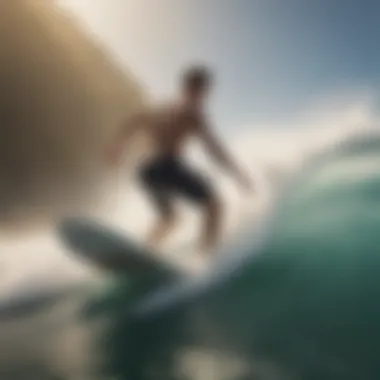
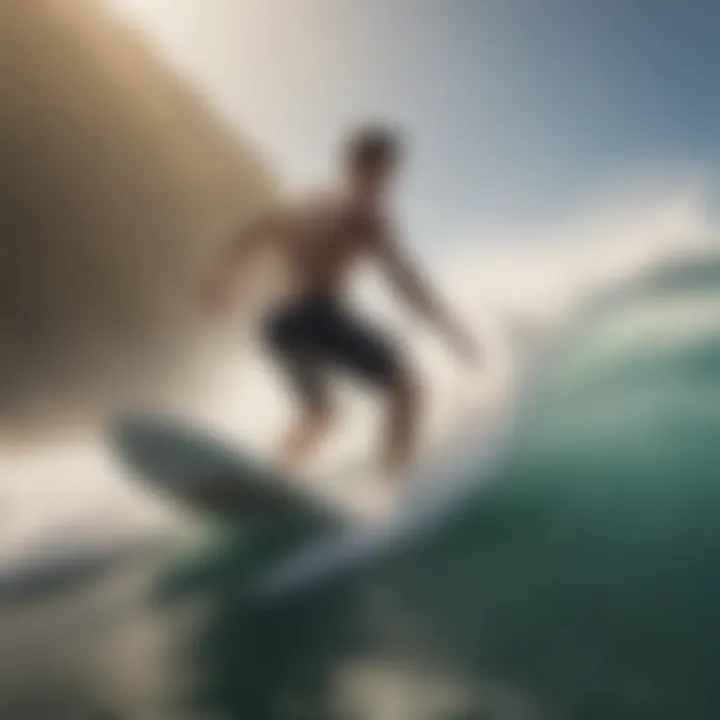
Navigating Water Hazards
The unpredictability of open waters means that hazards abound, from submerged rocks to swift currents that can easily catch you off-guard. Knowing how to navigate these dangers is essential for your own safety and that of those around you.
Tactical Awareness: Always be vigilant of the surroundings. Before hitting the water, familiarize yourself with the area. If you’re at a new lake or coastline, check local maps and consult with seasoned surfers or boaters.
- Look Out for Buoys: These markers are your friends. They signal shallow zones and potential hazards. Don’t disregard them, as they can save you from a nasty surprise.
- Weather Conditions: Wind and wave conditions can change on a dime, leading to treacherous waters. Always assess weather forecasts before heading out. If the sky looks ominous, it’s better to be safe than soaked.
- Awareness of Other Boaters: Stay in your lane and always keep an eye on other watercraft. It doesn’t hurt to have a partner on the boat who can keep watch while you ride.
To sum up, proactive awareness and understanding of the environment can prevent accidents.
"An ounce of prevention is worth a pound of cure."
Engaging in safety protocols not only insulates you but enhances the overall experience for everyone involved. Take the time to prepare and navigate wisely—your future self will thank you.
Environmental Considerations for Wakesurfing
The allure of wakesurfing extends beyond the thrill of gliding across the water. With rising interest in outdoor activities, it’s essential to take a moment to reflect on how our surfing habits influence the cherished environments we navigate. Understanding the impact we have on ecosystems and adopting sustainable practices is crucial not just for today but for future generations of surfers as well.
Impact on Ecosystems
Every time a wakesurf board sails through the water, it’s not just the waves that are stirred. The ripple effects can be far-reaching.
- Water Quality: Boating and wakesurfing can lead to a rise in pollution levels due to oil spills, waste, and debris. This contamination poses a risk to marine life and overall water quality.
- Aquatic Habitat: The wake produced by boats can disrupt natural habitats, particularly for fish and other small creatures living near the shore. The force of a wake can erode bank structures, leading to habitat loss.
- Noise Pollution: The roar of engines and chatter from surfboards can disturb the serenity of nature, affecting wildlife behavior. Certain species rely on sound for communication and navigation, and unwanted noise can be detrimental.
"By being mindful of our actions on the water, we can help preserve the beauty and integrity of the ecosystems we enjoy."
Sustainable Practices
Transitioning to more eco-friendly surfing habits can be surprisingly simple and impactful. Here are some sustainable practices that every wakesurfer should consider:
- Choose Eco-Friendly Gear: Look for boards made from sustainable materials such as recycled plastics or bamboo, which are not only better for the environment, but often offer excellent performance.
- Minimize Gas Emissions: If it’s feasible, opt for electric boats or those with lower emissions. This can significantly cut down the pollution generated during your sessions.
- Follow Local Guidelines: Different regions may have specific rules designed to protect local wildlife and habitats. Be aware of these regulations and plan your surfing activities accordingly.
- Respect Wildlife: Always keep a respectful distance from marine animals and their habitats. Observing from afar can ensure that the wildlife remains undisturbed.
- Clean Up After Yourself: After a day on the water, take a moment to make sure that the area surrounding your surfing spot is clean. Carry a trash bag to collect any litter left behind.
In essence, the footprint of wakesurfing can be lightened with a bit of awareness and effort. By understanding the potential consequences of our activities on the ecosystems we enjoy, and employing sustainable practices, we not only enhance our own experience but also protect these natural wonders for fellow surfers and wildlife alike.
Exploring Different Types of Wakesurf Boards
When it comes to wakesurfing, understanding the variety of boards available carries significant importance for enthusiasts wanting to maximize their experience on the water. Each type of wakesurf board comes with its own characteristics, designed to cater to different riding styles, wave conditions, and personal preferences. Whether you are a beginner or a seasoned rider, knowing what suits your style can enhance your performance and enjoyment.
Traditional vs. Rocket Designs
In the conversation about wakesurf boards, traditional designs often emerge as the staple, characterized by their wider shape and flatter base. These boards are typically designed for stability, making them easier for novices to ride. They allow for smooth gliding on the wave, lending to a more forgiving learning curve. However, traditional boards might lack in agility and responsiveness when it comes to executing sharp turns or tricks.
On the flip side, rocket wakesurf boards present a more streamlined design, emphasizing performance. With a pointed nose and narrower tail, rocket boards facilitate quicker responses and sharper turns. This design makes them ideal for those looking to push their skills, perform tricks, or race down the wake. However, it’s worth noting that this sophisticated design may require more skill to handle, as they can be less forgiving compared to their traditional counterparts.
"Choosing the right board is not just about looks; it’s about aligning with your personal style and the conditions you frequently ride in."
When weighing the options between traditional and rocket designs, consider where you will ride most often and what maneuvers you wish to accomplish. For beginners, the stability offered by traditional boards may be advantageous, while intermediate and advanced riders might thrive on the performance potential of rocket wakesurf boards.
Comparison with Other Models
Aside from traditional and rocket wakesurf boards, there are numerous other models available, each boasting distinctive features. Notably, surf-style boards, often resembling those used in actual surfing, typically have a single fin setup which grants them great maneuverability. These boards tend to excel in ocean-like waves and offer a more natural surfing feel.
In contrast, skim-style boards are slimmer and allow for spinning and tricks, making them a fun option for those aiming for performance above all else. However, these boards can be tricky for beginners who may find them unstable.
Here’s a brief look at the key differences between board types:
- Traditional Boards: Wider, flat base, great for stability. Ideal for beginners.
- Rocket Boards: Pointed nose, agile, great for tricks. Recommended for advanced riders.
- Surf-style Boards: Similar to surfboards, used mainly in ocean-like waves. Excellent for maneuvering.
- Skim-style Boards: Slimmer design, suitable for spins and tricks. Potentially challenging for newcomers.
Understanding the differences between these boards assists riders in selecting a model that best aligns with their confidence level and the practices they want to pursue. It opens the door to a more enjoyable and successful wakesurfing experience. The key is to give each type a try to identify what feels right under your feet as you glide through the waves.
Epilogue: The Future of Wakesurfing
As we look ahead, the future of wakesurfing shines brighter than a summer's day at the beach. With the sport gaining traction among diverse groups, it’s not just about the ride anymore; it's about the evolution of the equipment that makes each session on the water memorable. The Rocket wakesurf board, in particular, symbolizes how innovation meets adventure, providing not just a way to catch waves, but an experience that caters to skill levels from novice to pro.
Technological Advances in Board Design
Recent years have seen significant strides in wakesurf board design, changing the game for enthusiasts. Manufacturers are now employing cutting-edge materials like carbon fiber and advanced EPS density foams. This enhances durability while keeping the board lightweight, allowing surfers to maneuver effortlessly.
Furthermore, design techniques like hydrodynamic shaping have gained popularity. These shapes not only create better lift but also reduce drag, making each ride faster and more responsive. Riders are now able to carve through waves with greater precision than ever, bringing forth an exhilarating experience.
"Innovation in board design has turned wakesurfing into a blend of art and science—every curve and contour plays a role in the performance on the water."
Additionally, advancements in fin technology have revolutionized how boards handle in different conditions. For instance, many boards now come with customizable fin setups, allowing riders to adjust their gear based on skill level and wave size. The flexibility of being able to tweak equipment has made it increasingly appealing for those looking to enhance their skills.
Community Growth and Its Influence
The wakesurfing community is expanding, and this growth has not gone unnoticed. With more enthusiasts hitting the water, the culture surrounding wakesurfing becomes richer. Online platforms, especially social media, have become the epicenter of sharing knowledge and experiences. From YouTube tutorials that demonstrate tricks to passionate discussions on forums like Reddit, there is no shortage of resources for eager learners.
Local clubs and communities are also blossoming, providing avenues for group events, competitions, and simply enjoying the surf together. This sense of camaraderie fuels motivation among surfers, pushing individuals to achieve new heights. The community's feedback loop influences manufacturers to adapt their designs and features based on what the riders truly want. Brands are listening, and that’s beneficial for everyone.
In summary, as technology continues to advance and communities thrive, wakesurfing stands poised for an exciting future. Boats, boards, and the experience itself are in a constant state of evolution, reflecting the desires and dreams of surf enthusiasts everywhere.















